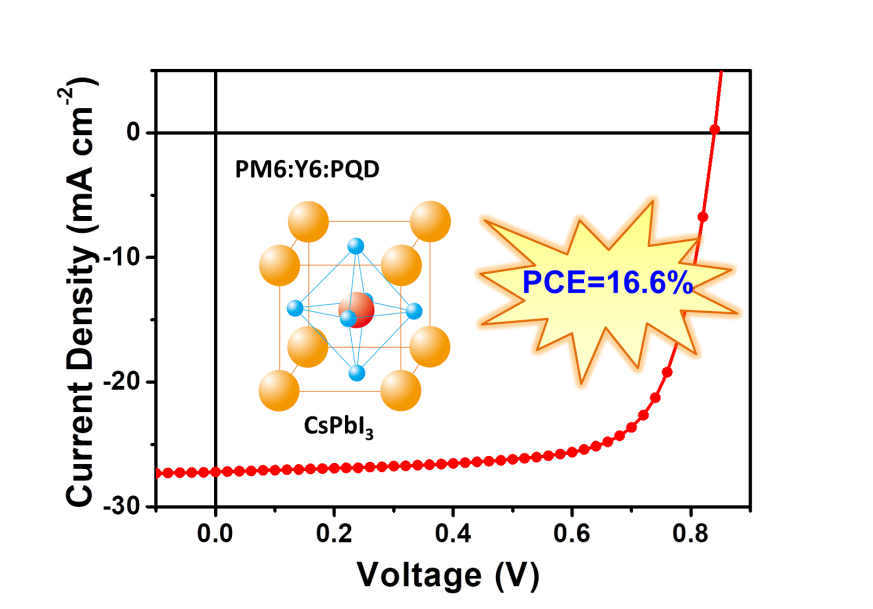Xiaowei Zhan’s group, from College of Engineering at Peking University, applied perovskite quantum dots with strong absorption, strong fluorescence, high charge mobility and high dielectric constant to organic solar cells (OSCs), which reduced energy loss and improved efficiency (Adv. Mater., DOI: 10.1002/adma.202002066,https://onlinelibrary.wiley.com/doi/10.1002/adma.202002066).
In 2015, the Zhan group pioneered the concept of "fused ring electron acceptor (FREA)" and invented the star molecule ITIC (Adv. Mater., 2015,27, 1170–1174, cited 1680 times). In 2018, they applied FREA to perovskite solar cells and achieved improved efficiency and stability.Most recently, they applied all-inorganic perovskite CsPbI3quantum dot (PQD) into FREA-based OSCs. Addition of PQD led to simultaneous enhancement of open-circuit voltage (VOC), short-circuit current density (JSC) and fill factor (FF); efficiencies were boosted from 11.6% to 13.2% for PTB7-Th:FOIC blend and from 15.4% to 16.6% for PM6:Y6 blend. It is worth noting that incorporation of PQD increased energy of charge transfer state, resulting in near-zero driving force and improvedVOC. Interestingly, due to formation of cascade band structure and increased molecular ordering, the PQD hybrid OSCs showed more efficient charge generation than the control device without PQD even at near-zero driving force, contributing to enhancedJSC. Strong fluorescence of PQD enhanced external quantum efficiency of electroluminescence of the active layer, which can reduce non-radiative recombination voltage loss. High dielectric constant of PQD screened coulombic interactions and reduced charge recombination, which was beneficial for increased FF.This work may open up an avenue to efficiently reduce the energy loss and improve the efficiency of non-fullerene OSCs.

J-Vcurve of OSC based on PM6:Y6:PQD and the PQD structure
The research work was supported by the National Nature Science Foundation of China and Basic Research Promotion Project of Peking University.